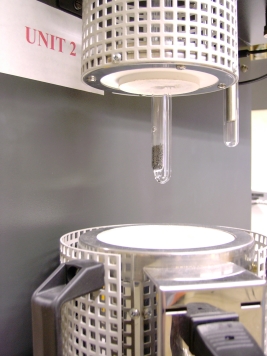Catalyst characterization typically targets information on both the catalyst support and the active metal phase. Whereas physical gas adsorption is used to cover the support properties, in chemical gas adsorption (chemisorption) a reactive gas, mostly hydrogen or carbon monoxide, is used to obtain information on the active properties of the metal phase of a (supported) metal catalyst. Chemisorption provides quantitative information on the active metal phase such as metal surface area, metal dispersion and metal crystallite size and enables to correlate the catalyst properties with its catalytic performance. As a consequence, chemisorption is a powerful catalyst characterization tool.
During a chemisorption experiment, the sample is first reduced in hydrogen and then evacuated to retrieve the active metal phase. In the volumetric method, known amounts of hydrogen (Pt, Ni, Rh, Ru) or carbon monoxide (Pd, Pt) are dosed and subsequently adsorbed at different partial pressures, resulting in a chemisorption isotherm. Preferably, this isotherm measurement is repeated after applying an evacuation step at the analysis temperature, to remove weakly adsorbed species (back-sorption or dual-isotherm method). The difference between the two isotherms represents the chemically bonded reactive gas and can be used to calculate the active metal surface area. Combined with information on metal loading, the metal dispersion and average metal crystallite size can also be calculated.
The hydrogen or carbon monoxide chemisorption measurements are performed on a Quantachrome Autosorb-1C adsorption analyzer or Autosorb iQ system. The typical result of a catalyst characterization measurement by chemisorption consists of a graphical representation of the chemisorption isotherms and tabular data providing information on active metal surface area, metal dispersion, and average crystallite size.




